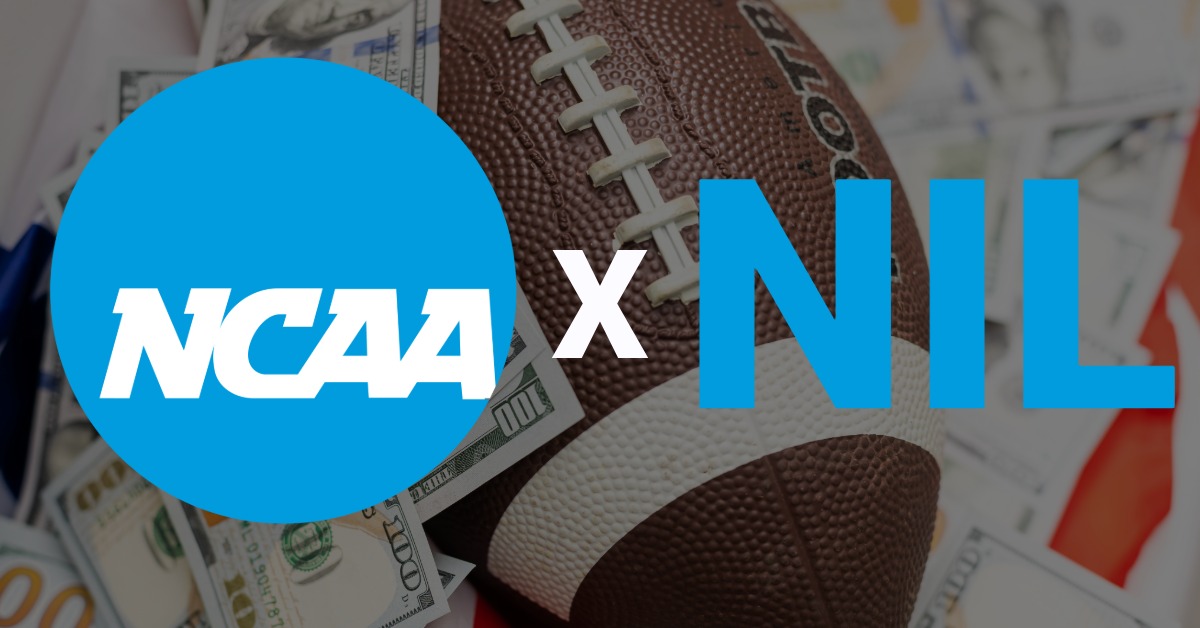When the NCAA approved Name, Image, and Likeness (NIL) rights in 2021, it changed college athletics forever. For the first time, student-athletes gained the ability to profit from their personal brand, through sponsorships, social media, appearances, merchandise, and more.
Since then, NIL has evolved into one of the most influential factors in college recruiting, athlete marketing, and even team culture. What started as a groundbreaking decision has now become a core part of how college sports operate.
Here’s how NIL is reshaping opportunities for athletes, programs, and the future of recruiting.
What NIL Actually Means
NIL stands for Name, Image, and Likeness, the three elements that make up a person’s personal brand. Under the new NCAA rules, college athletes can now:
- Sign endorsement deals with brands
- Partner with companies for social media promotions
- Sell autographs and personal merchandise
- Host camps, clinics, or training sessions
- Monetize YouTube or TikTok channels
- Build their own businesses or personal brands
The goal is simple: allow athletes to benefit from the value they create through their athletic performance and influence.
Before 2021, college athletes were prohibited from making any form of income related to their athletic identity. Today, that restriction is gone, opening up a new era of empowerment and entrepreneurship.
The New Recruiting Factor
NIL has quickly become a major recruiting factor for both high school and transfer athletes.
College programs now promote their NIL support systems the same way they highlight facilities, academics, or championship history. Many schools have launched dedicated NIL departments or partnerships to help athletes manage branding, legal contracts, and marketing.
Top prospects are now asking schools questions like:
- “What NIL opportunities exist for my sport?”
- “Does the school help athletes connect with local businesses?”
- “Are there workshops or staff to guide me through branding?”
This shift has created a competitive environment where schools that invest in NIL resources gain an advantage in recruiting.
How Athletes Are Benefiting
NIL has created opportunities for athletes across every division, not just the stars on national TV.
1. Social Media Sponsorships
Athletes with strong online followings are now collaborating with brands that align with their image. Even athletes at smaller schools can attract sponsorships if they have an engaged audience.
2. Local and Community Deals
Many student-athletes are working with local businesses in their college towns, from restaurants to gyms to sports apparel stores. These deals often provide financial support and help athletes build relationships within the community.
3. Personal Branding Opportunities
Athletes are learning how to create and manage their personal brands early. They’re gaining marketing, communication, and financial experience that can benefit them long after college.
4. Merchandise and Entrepreneurship
Some athletes are launching their own apparel lines, hosting camps, or starting online businesses. NIL has unlocked creativity and independence for players who used to be limited to scholarships alone.
The biggest winners are those who approach NIL as a long-term opportunity, not just a quick payday.
The Rise of NIL Collectives
One of the biggest developments in the NIL era is the rise of NIL collectives.
These are third-party organizations, often supported by alumni or boosters, that pool funds to help athletes at specific schools access sponsorships and partnerships. While these collectives operate independently from the universities, they play a significant role in connecting athletes with brand deals.
There are now hundreds of collectives across NCAA Division I programs, especially in Power Five conferences. Some help athletes build community projects, while others focus on securing deals that reward team-wide participation.
While NIL collectives have brought in more money and opportunity, they’ve also raised questions about long-term sustainability and fairness. The NCAA and state lawmakers continue to adjust rules to ensure transparency and protect athletes.
Challenges and Concerns
Although NIL has created incredible opportunities, it also comes with challenges that both athletes and programs are learning to navigate.
1. Education and Compliance
Many athletes are new to contracts, taxes, and brand management. Without proper education, they risk signing unfair deals or losing eligibility by violating NCAA or state rules.
That’s why schools and agencies like ASM Sports emphasize NIL education, teaching athletes how to manage partnerships legally and professionally.
2. Uneven Distribution
Not every sport or athlete benefits equally. High-profile athletes in football and basketball often receive more attention, but that’s starting to change as brands recognize the power of niche markets and smaller programs.
3. Recruiting Pressure
There is growing concern that NIL could make recruiting overly focused on money rather than development. However, responsible schools and organizations are working to balance opportunity with education, ensuring NIL enhances the athlete experience rather than distracting from it.
How NIL Empowers Athletes
Despite these challenges, NIL represents one of the most athlete-empowering reforms in college sports history.
It gives athletes control over their image and the freedom to turn their passions into careers. For international players, it opens global opportunities once thought impossible. For walk-ons or lower-division athletes, it provides extra financial support that can help them stay in school.
NIL is also teaching athletes valuable real-world skills, from financial literacy to marketing to contract negotiation. Those lessons go far beyond sports and prepare them for life after college.
The Future of NIL
As NIL continues to evolve, the next few years will likely bring more structure, more education, and more opportunities.
Here’s what’s coming:
- Federal legislation that could unify rules across all states
- More university-led NIL programs that include financial literacy and career development
- Smarter partnerships between athletes and brands that focus on authenticity and long-term impact
- Stronger support systems from agencies and organizations like ASM Sports to help athletes navigate every stage safely and effectively
The early chaos of NIL is starting to settle into a new normal, one where student-athletes are recognized as brands and professionals in their own right.




